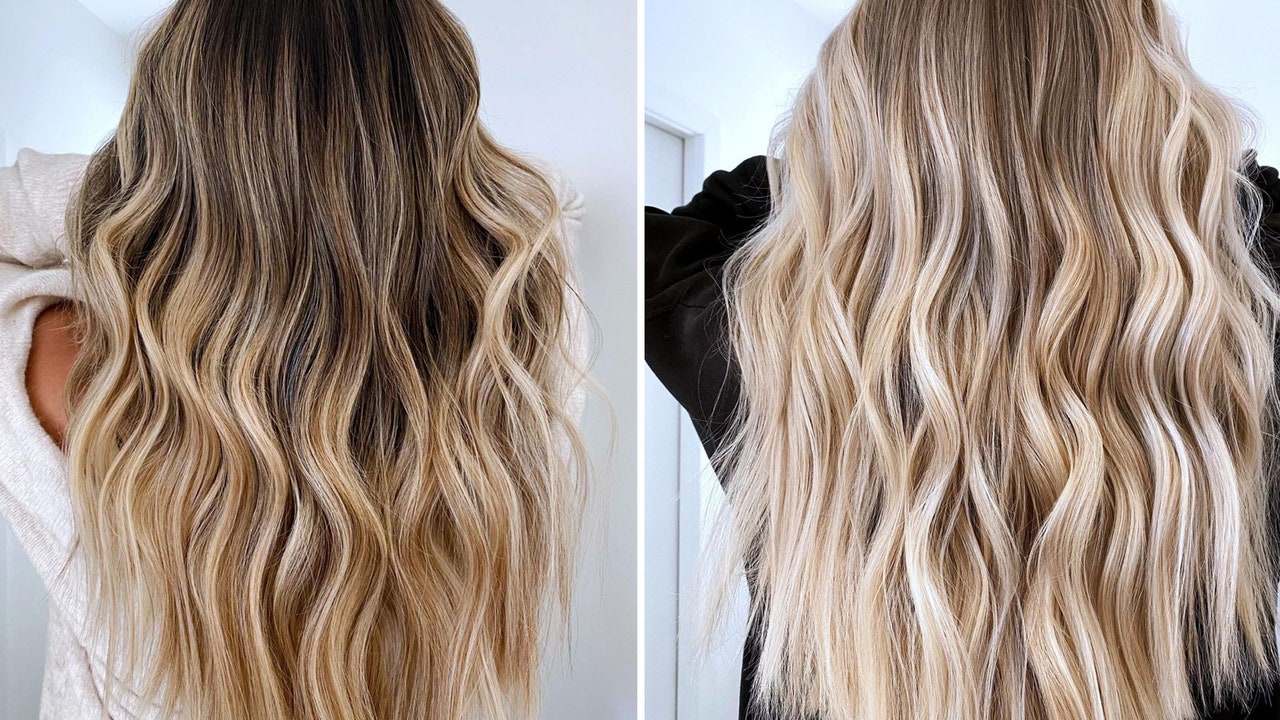Reverse Balayage Is the Coolest New Hair Color Trend for Blondes

[ad_1]
As we delve deeper into winter, the blondes among us may be thinking about crossing over to the dark side. And while it’s not as much of an undertaking as going from chocolate to platinum, the transition from blonde to brunette is still quite the process. Luckily there’s a new trend popping up that’s a seamless way to go deeper: reverse balayage.
We all know balayage as the secret behind pretty much every celeb’s sun-kissed color. It’s a way to add highlights by directly painting on your hair, and it gives a natural, effortless look. While balayage is all about subtly brightening up hair, reverse balayage adds darkness and dimension back to light hair.
“Reverse balayage adds depth back at the root,” says Lauren Grummel, a hair colorist in NYC. “It lowers the contrast between highlights and root color, and pops the rest of the highlights. It’s great for blondes who want to go a bit darker without a lot of commitment.” So instead of the typical subtle ombré where a stylist will lighten up your ends, they’re working backward by adding in the deeper tones to get the same effect.
Celebrity hair colorist Bianca Hillier adds that it’s a great technique if you’ve overdone it on the highlights or are ready to transition to a more natural look—now would be a great time to consider it pending another wave of salon closures.
“A proper balayage consist of fluidity from root to tip,” says Hillier. “It will transition from the root being the darkest part of the hair to the tips being the lightest zone. This imitates a natural hair progression. While a balayage would generally require painting pops of lighter pieces into your hair, a reverse balayage is placing lowlighted shades to create depth in the hair.”
Both stylists love the technique since it’s so low-maintenance while also looking dimensional and pretty. Since your roots are darker, theres way less upkeep, but you still get pops of brightness from your highlighted ends. “I love the lived-in and grungier feel of the reverse balayage,” says Hillier. “Something with depth always feels more realistic.”
When talking to your stylist, your keyword is going to be depth. Grummel suggests asking for a root drag, “typically in a shade a little lighter than your natural color and darker than the highlighted pieces.”
Hillier says the secret to making sure your color looks great is asking for a professional strengthening treatment like Olaplex. Since this technique has so much room for interpretation, she says to be clear with your stylist on how dark you’re willing to go on top, and how light you want everything else to remain. And of course, bring plenty of photos—like these below—for reference.
And if you don’t naturally have light hair but love the look? Since brunettes already have a naturally deeper base for lowlights, you can get the same effect with traditional balayage hair color—just make sure, again, to emphasize that you want the overall effect to have lots of depth and dimension. Either way, as all these photos prove, you really can’t wrong.
Bella Cacciatore is the beauty associate at Glamour. Follow her on Instagram @bellacacciatore_.
[ad_2]
Source link




